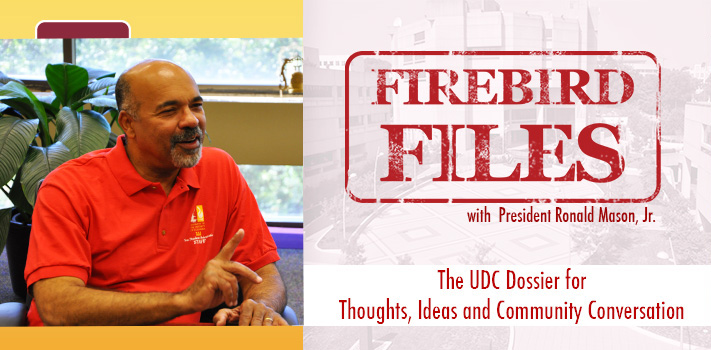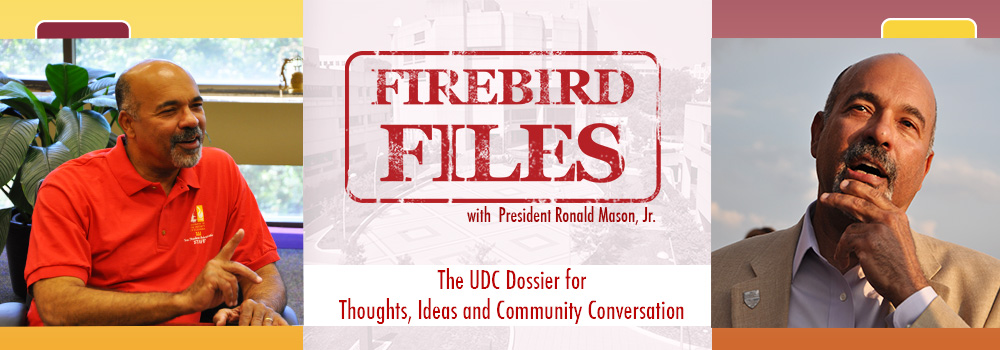
America in Black and White – Part I

America in Black and White – Part I
As president of the public institution of higher learning in and for the nation’s capital, and out of a sense of obligation and intellectual honesty, I feel compelled to comment on the article that appeared in the Sunday, July 24, 2016, edition of the Washington Post titled “What whites mean when they say race relations are bad.” I hope that my words provoke thought and stimulate honest conversation.
In referencing a survey response the article noted “Our average white respondent believed that…in 2011, anti-white bias was even bigger than anti-black bias.” The authors went on to say “this perception is fascinating, as it stands in stark contrast to data on almost any outcome that has been assessed.” While the survey revealed the paradox of racial attitudes in America, it did little to examine their root cause.
Race relations in America are best understood not by documenting attitudes that recite a familiar script, but by focusing on the lines that are omitted from the script. Some things, no matter how factual, are seldom said out loud. Their utterance is often uncomfortable and usually comes with a price. That is why the facts about what is happening in America today are absent from the dialogue. Instead confusion, fear, and denial become the dominant themes.
To begin with, there are two Americas, one aspirational, the other real. In the former, all men are created equal. In the latter, black people were chattels. Also, the real America:
- was founded as a white nation, and all of its systems were built upon the premise that it should and always would be a white nation;
- brought Africans here to be the slaves and servants of white people;
- was concerned after the Emancipation Proclamation about preserving the Union of white people, and President Lincoln thought the best way to do so was to deport the former slaves; and,
- by definition, treats everyone other than white people as something less. The most egregious example of this is the suppression of black people by way of chattel slavery, Jim Crow and the “War on Drugs”.
The American order of things is that America is a white country and black people who are not servants or slaves don’t belong in it. The mere notion that black people want to be treated the same as white people is, in and of itself, a threat to the order of things; i.e., a threat of insurrection. The officers of the law and the black community have a tense relationship because the role of the former is to maintain law and order. Add to that the stresses on both sides of being unemployed, or overworked and underpaid, the competition for jobs, the fear of miscegenation, and the criminalization of being black. The sum of it all is that when a policeman pulls the trigger on a black man, it is a conditioned response.
If you doubt this is true, witness what happened recently in Florida. A black therapist was in the street attempting to return an autistic patient to the care facility. When the policeman arrived, the black man lay on the ground, raised his arms in the air, announced that he was a therapist and made it clear that he was unarmed. The policeman shot him anyway. The official statement from the policeman was that he made a split second decision appropriate under the circumstances. The police union said that the officer was attempting to protect the victim and shot him by accident. The victim, while describing what happened from his hospital bed, said he asked the officer why he shot him, and the officer responded, “I don’t know.”
The Post article concludes with “In the call to end anti-black racism, some see an effort to allow everyone to pursue the American Dream. But others see a threat and a reason to resist.” So when the media touts that America is divided, it speaks of a white divide, not a racial divide. White people are divided over the original questions. Are all men created equal? Or is America a nation of, by and for white people?
Violence and death don’t always come from a gun. Slavery was a violent thing. Jim Crow was a violent thing. The “War on Drugs”, specifically designed to put masses of black people in jail, is a violent thing. Poverty in the midst of great wealth is a violent thing. Ignoring the violent legacy of a history of violence is also a violent thing. If we want to stop any of the violence we must stop all of it. The process begins with the courage to state the facts and the commitment to engage in discourse around them.
Part II: Is it just race?
Part III: What are we to do?
Part IV: Aspirational America